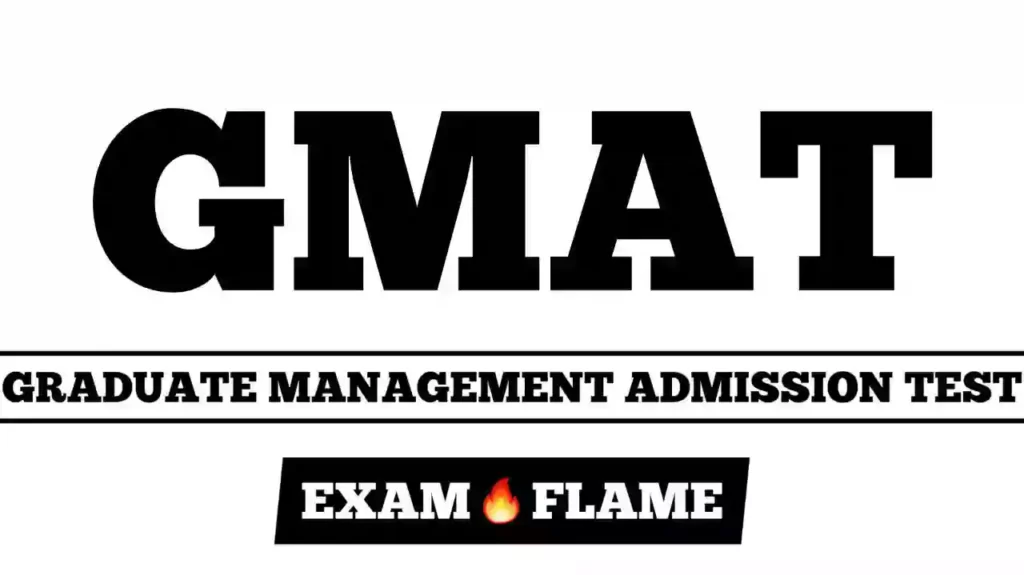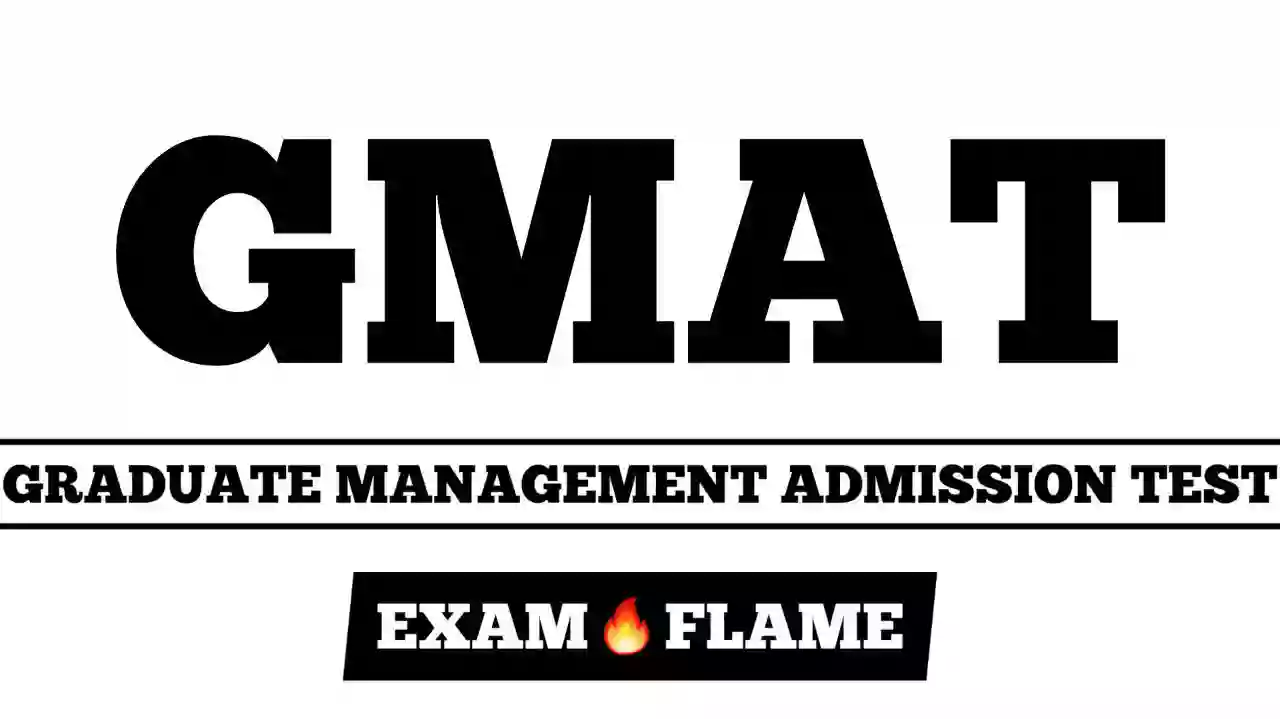GMAT Syllabus PDF Download 2023 and in this post the latest updated GMAT Syllabus is explained point by point and also explained Section-wise Questions, Marks & time distribution
The Graduate Management Admission Test (GMAT) is a standardized exam used to assess the readiness of applicants to pursue a graduate degree in business. It is designed to measure the test-taker’s analytical writing, integrated reasoning, quantitative aptitude, and verbal reasoning skills.

The GMAT exam consists of four main sections: Analytical Writing, Integrated Reasoning, Quantitative Aptitude, and Verbal Reasoning.
Here is a breakdown of the GMAT exam pattern:
- Analytical Writing: The Analytical Writing section consists of a single prompt that presents an argument, and test-takers are asked to write an essay analyzing the argument and explaining why it is either strong or weak. This section is 30 minutes long and is scored on a scale of 0 to 6 in half-point increments.
- Integrated Reasoning: The Integrated Reasoning section consists of 12 questions that test the test-taker’s ability to analyze and synthesize data from multiple sources, to draw conclusions, and to solve complex problems. This section is 30 minutes long and is scored on a scale of 1 to 8 in single-digit increments.
- Quantitative Aptitude: The Quantitative Aptitude section consists of 31 questions that test the test-taker’s ability to understand, interpret, and analyze quantitative information, and to solve problems using mathematical concepts and techniques. This section is 62 minutes long and is scored on a scale of 0 to 60 in single-digit increments.
- Verbal Reasoning: The Verbal Reasoning section consists of 36 questions that test the test-taker’s ability to read and comprehend written material, to evaluate arguments, and to correct written material to conform to standard written English. This section is 65 minutes long and is scored on a scale of 0 to 60 in single-digit increments.
Overall, the GMAT exam is 3 hours and 30 minutes long and is scored on a scale of 200 to 800 in 10-point increments. The scores for the Analytical Writing, Integrated Reasoning, Quantitative Aptitude, and Verbal Reasoning sections are combined to give the overall GMAT score.
The GMAT exam is offered year-round at testing centers around the world. It is administered by the Graduate Management Admission Council (GMAC). The GMAT score is used by business schools as part of their admissions process.
GMAT Analytical Writing Syllabus
The GMAT exam includes a section on analytical writing. This section consists of a single prompt that presents an argument, and test-takers are asked to write an essay analyzing the argument and explaining why it is either strong or weak.
The GMAT analytical writing section is designed to assess the following skills:
- Ability to think critically and articulate ideas clearly and effectively
- Ability to analyze and evaluate arguments
- Ability to develop and support a perspective on the issue presented in the prompt
- Ability to communicate ideas in a coherent and well-organized manner
Here is a breakdown of the GMAT analytical writing syllabus:
- Understanding the argument: Test-takers should read the argument carefully and understand the main points and supporting evidence.
- Evaluating the argument: Test-takers should consider the logic of the argument and look for any weaknesses or flaws.
- Organizing the essay: Test-takers should plan and organize their essay in a clear and logical manner, with an introduction, body, and conclusion.
- Developing and supporting a perspective: Test-takers should take a position on the argument and support it with evidence and examples.
- Communicating ideas effectively: Test-takers should write clearly and concisely, using proper grammar and vocabulary.
Overall, the GMAT analytical writing section is designed to assess the test-taker’s ability to analyze and evaluate arguments and to communicate their ideas clearly and effectively.
GMAT Integrated Reasoning Syllabus
The GMAT Integrated Reasoning syllabus includes the following types of questions:
- Table Analysis: Test-takers are given a table with data and are asked to analyze the information and answer questions based on the data.
- Graphic Interpretation: Test-takers are given a graph or chart with data and are asked to analyze the information and answer questions based on the data.
- Two-Part Analysis: Test-takers are given a problem with two parts and are asked to solve both parts.
- Multi-Source Reasoning: Test-takers are given information from multiple sources (e.g., a table and a graph) and are asked to analyze the information and answer questions based on the data.
- Command of Evidence: Test-takers are given a passage with a conclusion and a list of statements, and are asked to determine which statements support the conclusion and which do not.
Overall, the GMAT Integrated Reasoning section is designed to test the test-taker’s ability to analyze and synthesize data from multiple sources, to draw conclusions, and to solve complex problems.
GMAT Quantitative Aptitude Syllabus
The GMAT Quantitative Aptitude syllabus includes the following types of questions:
- Problem-Solving: Test-takers are given a problem and are asked to solve it using mathematical concepts and techniques.
- Data Sufficiency: Test-takers are given a problem and two statements about the problem, and are asked to determine whether the statements are sufficient to solve the problem.
The GMAT Quantitative Aptitude section covers the following mathematical concepts and techniques:
- Arithmetic: Test-takers should be familiar with basic arithmetic concepts such as whole numbers, fractions, decimals, and percentages.
- Algebra: Test-takers should be familiar with basic algebraic concepts such as equations, inequalities, and functions.
- Geometry: Test-takers should be familiar with basic geometric concepts such as points, lines, angles, triangles, circles, and three-dimensional figures.
- Data Analysis: Test-takers should be familiar with basic concepts of data analysis such as mean, median, mode, and range.
Overall, the GMAT Quantitative Aptitude section is designed to test the test-taker’s ability to understand, interpret, and analyze quantitative information, and to solve problems using mathematical concepts and techniques.
The Quantitative Aptitude Important topics for GMAT 2023 are as follows:-
| Arithmetic | 》Probability 》Ratio and proportion 》Simple and Compounded Interest 》Speed, time, distance 》Percentage 》Average 》Fractions 》Decimals 》Number Properties 》Multiples and Factors |
| Algebra | 》Permutation and combination 》Algebraic expressions and equations 》Arithmetic and geometric progressions 》Statistics 》Exponents 》Functions |
| Geometry | 》Coordinate geometry 》Circles 》Quadrilaterals 》Triangle 》Lines and angles |
GMAT Verbal Reasoning Syllabus
The GMAT Verbal Reasoning syllabus includes the following types of questions:
- Reading Comprehension: Test-takers are given a passage and are asked to answer questions about the passage.
- Critical Reasoning: Test-takers are given a short argument and are asked to evaluate the argument and answer questions about it.
- Sentence Correction: Test-takers are given a sentence with an underlined portion and are asked to choose the option that best expresses the idea in standard written English.
The GMAT Verbal Reasoning section covers the following language skills:
- Vocabulary: Test-takers should be familiar with a wide range of vocabulary, including common words and phrases, as well as more specialized terms.
- Grammar: Test-takers should be familiar with the rules of standard written English, including syntax, verb tense, and word choice.
- Reading comprehension: Test-takers should be able to understand and interpret written material, including main ideas, supporting details, and implications.
Overall, the GMAT Verbal Reasoning section is designed to test the test-taker’s ability to read and comprehend written material, to evaluate arguments, and to correct written material to conform to standard written English.
| NOTE:- If you want anything else like e-books, practice questions, Syllabus, or any exam-related information, kindly let us know in the comment section below. |
GMAT Syllabus PDF Download 2023
Download the latest GMAT Syllabus PDF from below:
